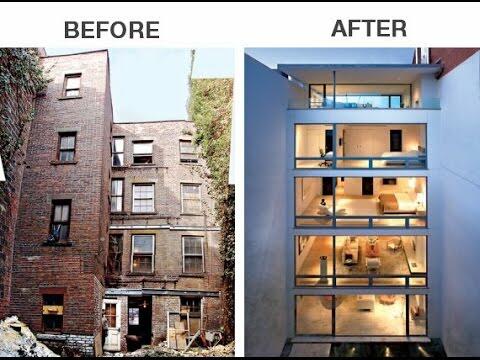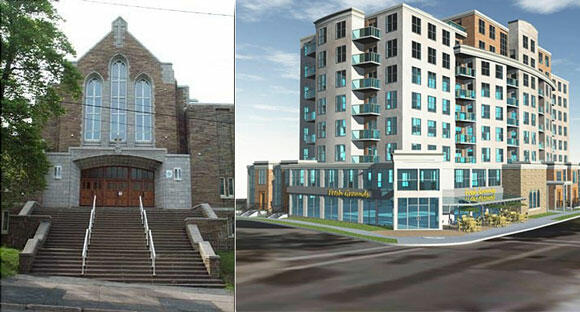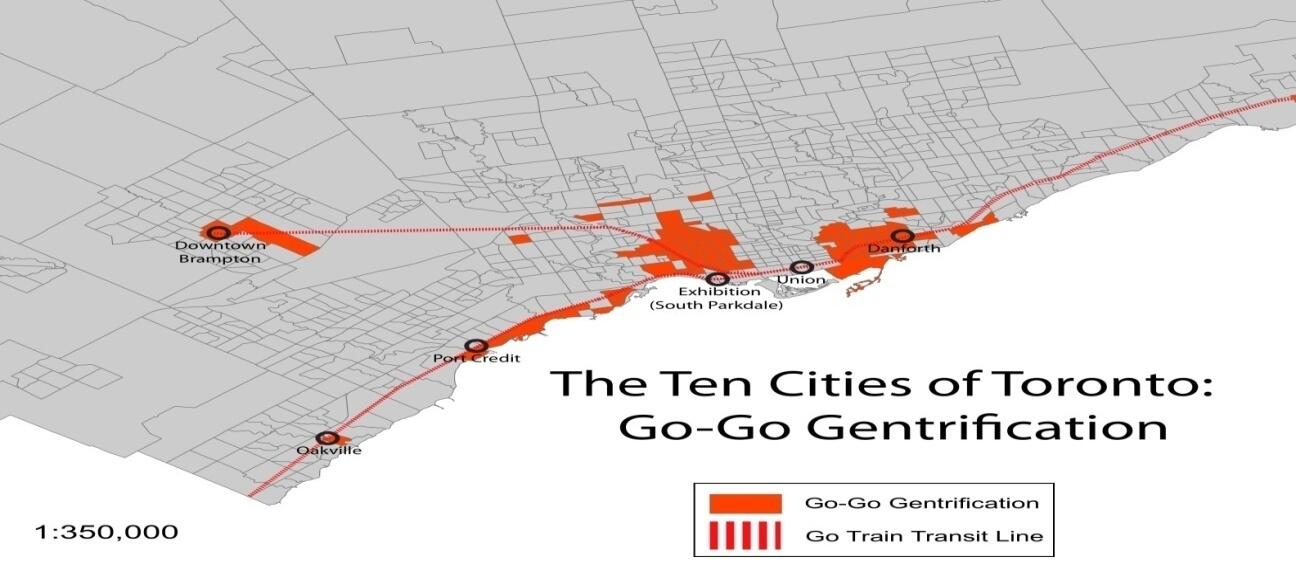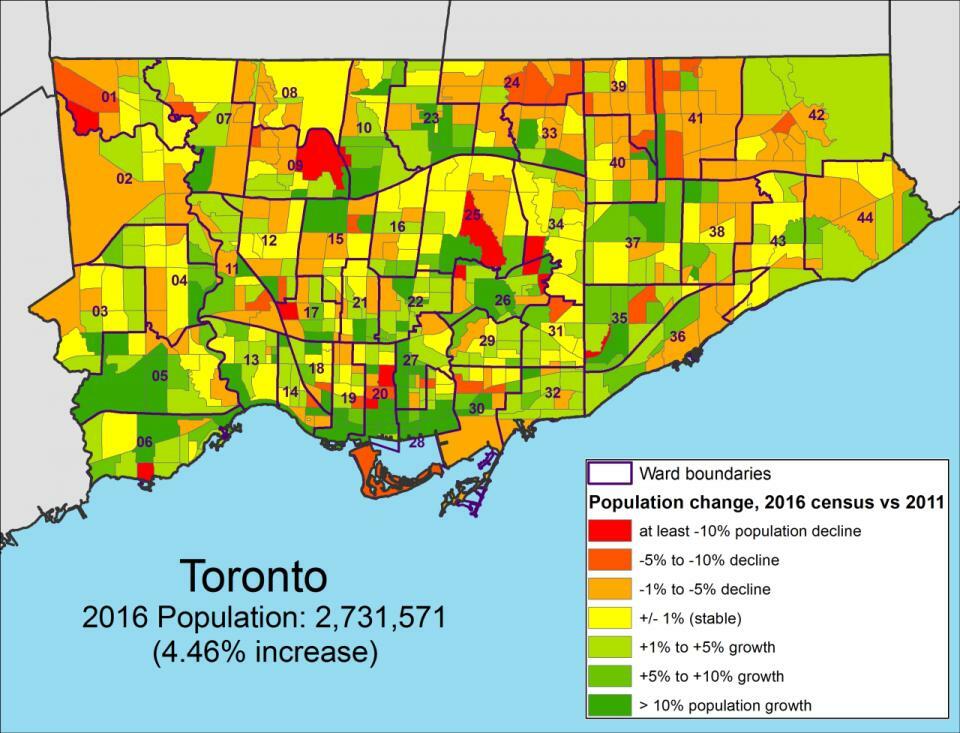What is Gentrification?
Urban planning in Canada is taking a completely new twist that many had not anticipated. Scholars and a section of the political class have named the new approach to urban planning gentrification. Maschaykh (2015) defines gentrification as “the process of renovating and improving a house or district so that it conforms to middle-class taste” (p. 78). In this new approach, old buildings that were designed and built several years ago are destroyed or remodeled into new structures.
Toronto is one of the areas that are affected most by this approach to urban planning and development. According to Hays (2016), the Toronto Strong Neighborhoods Strategy 2020 was meant to increase the number of housing units in the region but in a way that promotes integration and positive engagement. However, many scholars and the political class argue that the new approach is only focused on one area of the vision, which is increasing the number of condos in major urban centers.
When these developers come with their plan, they promise the local community that their focus is to improve the housing sector in line with the emerging standards. After houses are refurbished, the amount needed for rent will be high, and the previous tenants are forced to look for alternatives. A section of the community is also opposed to the new system saying that it is desecrating Canadian culture capital. It is important to find a way of addressing the concerns that stakeholders have to eliminate the current controversies in the new approach to urban planning.
The Pros and Cons of Gentrification
According to Paton (2014), gentrification is not unique to Canadian cities. The approach of uplifting cities and improving the residential space started in most European cities such as London and Paris. As the global population increases, the number of people living in urban centers is also on the rise. Some of these cities have buildings constructed over 100 years ago when vertical space was not a major issue. However, that has changed, and the new demand for housing units has forced urban planners to rethink strategies that can help meet the local demand. Gentrification is coming out as one of the ways of addressing this problem. It is important to discuss the pros and cons of this approach to urban development.
One of the biggest benefits of gentrification is the modernization of housing units in the major cities. It eliminates designs that were constructed dozens of years ago with beautiful, modern ones, which are space conscious. According to Maschaykh (2015), most of the old condos lack sprinkler systems that can enhance fighting the fire, effective exit routes in cases of emergencies, and many other modern housing systems meant to improve the safety, security, and functionality of the houses. Figure 1 below shows a clear contrast in terms of the beauty of an old housing structure and a new one after gentrification.

Paton (2014) says that gentrification is the only way of utilizing the land space effectively. Some of the current buildings in cities such as Toronto and Vancouver were constructed when the population was less than half of the current one. As the number of residents continues to increase, the land space is not increasing. Sticking to the old modeled structured cannot provide a proper solution to the emerging housing problem. It is necessary to have new structures that are sensitive to the problem of scarcity of land. Gentrification offers the best solution to this problem.
It is important to note that gentrification has disadvantages that need to be addressed to ensure that concerns of a section of the community have been addressed. One of the biggest issues with gentrification is its destruction of most of the cultural buildings in major cities around the world. Montreal’s Saint-Henri area has popularly been considered a cultural capital in Canada. The new approach to urban planning and development threatens to wipe that out completely. The cultural buildings that defined the city are being replaced by new buildings, erasing any cultural connotations in the region.
If the trend is not regulated, then this cultural city will be transformed into a modern urban center. Another major issue that has been raised is the displacement of the lower-middle-class members of the society in these cities. Once these houses are renovated to modern standards, the rental cost is hiked, making them unaffordable to the previous owners. Some are forced into the cheaper ghettos that are yet to be affected by gentrification. Others have complained that the new urbanization approach is ignoring the need to preserve cultural buildings, including churches. Figure 2 below shows a church that is earmarked for demolition to give way for the construction of a new condo.

Examples of Areas That Have Gone Through the Process
Montreal is one of the areas which are most affected by the gentrification process. However, Hays (2016) observes that many other cities in other provinces in Canada are also going through the same process. One of the cities significantly affected by the new urbanization plan in Winnipeg in Manitoba, with a population of 641,483. According to Paton (2014), Quebec City in Quebec has also been facing gentrification in the recent past. Old structures in these cities are disappearing at alarming rates. The increasing population is always cited as the main reason why it is necessary to replace the old buildings with new housing units that maximize the use of space.
How These Areas Were Affected
Gentrification in the urban centers discussed above has had a significant impact on the local population and the landscape of the area. According to Hays (2016), most of the gentrified cities have changed from what they were several decades ago. New skyscrapers are emerging to replace the old houses. The infrastructural development is impressive. The cities are now sustaining the increasing number of residents because of the structures that take advantage of the vertical space.
However, Maschaykh (2015) notes that as the strategy addresses the problem for a section of the society, especially the rich and the working middle-class, another section is negatively affected. The lower-middle-class people who were previously living in these cities are being displaced. Some of the cultural buildings and restaurants are phased out as the new buildings emerge. Those who are replaced are forced to live in the city suburbs or ghettos where they can afford to pay rent.
The Inevitability of Gentrification in Saint-Henri
Saint-Henri is one of the major urban centers in Canada that have experienced massive modernization in the housing sector. Most of the traditional old-model houses are modernized to meet the emerging needs. Hays (2016) notes that gentrification in Saint-Henri has elicited major public debate, especially among the local population. A section of the local community feels that the process is inevitable as a form of urban renewal. On the other hand, the opponents feel that this approach to urban renewal is threatening the very culture that the city has held dear for decades. These conflicting views have affected the ability to achieve the urbanization programs in line with the expectations of the local community.
The people opposed to gentrification have a genuine argument when they say that cultural values associated with specific buildings will be lost. They are also right when they against the new phenomenon where the local residents are displaced once these buildings are modernized. However, the truth is that gentrification being experienced in Saint-Henri is inevitable because of the need to have new structures that make proper use of the available land space. The city’s population is growing so rapidly that lack of housing is becoming a major problem. According to Paton (2014), globalization has had a serious impact on the population of Canada.
Many people from around the world are immigrating to Canada as one of the most preferred destinations in North America. Some of them are students, while others are economic immigrants. Paton (2014) argues that cases where people are forced to share rooms are common. Students may not have a problem sharing rooms with their colleagues. However, adults seeking to relocate to these cities may not find comfortable sharing rooms. Statistics show that the population is likely to increase further, which is an indication that the demand for housing units is expected to be higher than it is currently. Gentrification is considered the only way of addressing this problem.
The 1 in 6 Rule
A perfect example of a deliberate attempt to fight gentrification in the city of Saint-Henri taken by the local authorities is the 1 in 6 rule. The new rule restricts businessmen from opening new classy restaurants 25 miles from an existing one. According to Maschaykh (2015), many people have complained that the new facilities are too expensive for them to afford. As such, the move made by the local authorities is not only meant to protect the heritage of the city but also to ensure that the lower-middle-class members of the society are protected from aggressive businessmen who are increasingly targeting the rich and the upper-middle-class members of the society.
The rule is noble, and its intentions are meant to protect a section of society that is not financially empowered. However, one of the main questions that it raises is how long such laws will remain relevant in this city. According to Paton (2014), change is a strong force that one can manage to resist just for a short while. At the moment, it may be possible to come up with such laws as the 1 in 6 rule when the demand for these services is still bearable. However, soon it will be clear to the local authorities that change is a force that cannot be stopped for long.
The demand for new restaurants, new condos, and other new products in the real estate market that is associated with gentrification is on the rise. Maschaykh (2015) explains that forces in the market often define the supply. When the demand for these products is high, the suppliers will attempt to increase the supply. The market forces define changes that are currently witnessed in urban planning and development.
The 1 in 6 rule may be popular to a section of the society at the moment, but its relevance may not last long. Saint-Henry, just like many other cities in Canada, the United States, the United Kingdom, France, and many other developed nations, is faced with the problem of the ever-increasing demand for housing units, more restaurants, and more entertainment joints than ever before, but space is limited. The living standards of the majority of residents in these cities are also increasing. It means that the residents desire to have modern housing facilities built as per the latest designs. Their emerging needs in the real estate sector are redefining strategies used by developers to ensure that they meet the demand.
Any law that seeks to fight against these changes can be viewed as retrogressive. They may not stand the test of time because the population of the city is consistently increasing (Paton, 2014). The local authorities and members of the society should understand and appreciate the fact that gentrification is inevitable and should be embraced as a form of urban renewal.
Gentrification in the Greater Toronto Area
Gentrification is increasingly becoming one of the most popular forms of urban renewal in the Greater Toronto Area (GTA). According to Hays (2016), the local developers have been keen on taking advantage of the open spaces that have not been utilized. However, after many years of rapid development and limited land space, it is now clear that a new approach to urban renewal is inevitable. New houses are being refurbished or demolished to give way to modern housing complexes.
The old restaurants along the city streets are also getting facelifts to modernize them so that they can be aligned with the emerging demand. In the GTA, this approach has been witnessed in various towns, especially those that have experienced a rapid increase in their population. Figure 3 below is a map of GTA identifying specific areas that have witnessed cases of rapid gentrification.

As shown in the map, the GTA is significantly affected by the increasing cases of gentrification. As shown in figure 3 above, some sections of the area are more affected than others. Some of these areas include Oakville, Union, South Parkdale, Downtown Brampton, and Toronto-Danforth, Port Credit. In this section, the focus will be to analyze gentrification in Downtown Brampton as one of the areas that are experiencing modernization at rapid rates in GTA.
Using the demographic links in this analysis is crucial. According to Paton (2014), gentrification is propelled by the force of the growing population in specific cities within the country. Downtown Brampton is one of the regions in GTA that has experienced a rapid increase in its population. It is currently one of the most densely populated areas in the region. Figure 4 below shows the population density in various parts of GTA. The city is identified as one of the most densely populated areas in Ontario.

The map above shows that Downtown Brampton is one of the areas in GTA that experienced a population growth of over 10% from the year 2011 to 2016. The city has been attracting local and international tourists for various reasons. The business community in the region has also registered impressive growth. These factors have led to the rapidly changing face of the town. Like Saint-Henri, Downtown Brampton is a cultural center with some buildings considered a true depiction of the town’s heritage, having been constructed over 70 years ago. Some of the restaurants in the city were designed and constructed using Victorian architectural designs (Paton, 2014).
Figure 5 below shows one of the oldest yet very popular hotels in Downtown Brampton, known as Aria Bistro & Lounge. Constructed using a beautiful pattern of red and black bricks, this is one of the few restaurants city still housed in the old buildings constructed over 50 years ago. The interior design of the restaurant has been remodeled to reflect the emerging needs, but the structure has not been brought down, as has been the case in various parts of the town.

According to Paton (2014), gentrification in the Greater Toronto Area is threatening to wipe out cultural structures that have for a long time been considered heritage centers. Libraries are getting refurbished, churches are giving way to new skyscrapers, and old apartments are getting replaced by new condos. The modernization is giving Downtown Brampton a new face that reflects a modern city. However, some people are not comfortable with the rapid change. They feel that real estate developers are only focused on making extraordinary profits at the expense of the local population.
They feel that buildings and sites that have for a long time reflected the heritage of the city are being wiped out without any considerations (Paton, 2014). Others also feel that the middle-lower class and the poor are getting pushed out of the city. Houses are becoming more expensive to buy or rent, restaurants are becoming unaffordable, and life is now unbearable to a significant population of the city residents who are not financially empowered.
According to Maschaykh (2015), the current trends in urbanization show that old structures designed several decades ago when real estate developers had enough land space may not be sustainable in the future. It means that beautiful hotels in Downtown Brampton such as Aria Bistro & Lounge may not be around for long. Soon, the city will rid itself of all the old buildings despite the resistance that has been witnessed in the recent past.
Conclusion
The paper shows that gentrification is one of the emerging urban renewal approaches gaining popularity around the world. The increasing population in major cities has forced developers to find alternative ways of meeting the high demand for housing units. The limited land space makes it impossible to build new houses in the affected areas. The study shows that gentrification cannot be avoided and should be embraced. However, the emerging wave of gentrification is threatening to replace traditional buildings in some of these cities. The limited land space and increasing population mean that this approach to urban renewal is unavoidable.
What needs to be done is to ensure that modernization does not leave some people homeless, and neither should it make life so expensive that the lower-middle class is forced out of the cities. The stakeholders should find a balance between meeting emerging needs for more housing units and the needs and concerns of the local population.
References
Hays, M. (2016). The one-in-six rule: Can Montreal fight gentrification by banning restaurants?The Guardian. Web.
Maschaykh, U. (2015). The changing image of affordable housing: Design, Gentrification and community in Canada and Europe. London, England: Routledge.
Paton, K. (2014). Gentrification: A working-class perspective. London, England: Ashgate Publishing Limited.
Toronto Social Development, Finance, and Administration. (2017). City of Toronto: The changing landscape of Toronto’s population. Web.